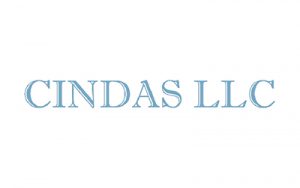
Focus on Data
Technical data can be expensive and difficult to obtain—collecting it, organizing it, analyzing it. Any time you have something someone else doesn’t have, you need to retain that advantage and put it to work.
収集・整理・分析された良質な技術データは高価で入手が難しい場合があります。あなたがそれを入手できることで、常に他の人に対して優位性を保証してくれます。

Photo source: Nicky Boogaard from Hardinxveld-Giessendam, Netherlands, via Wikimedia Commons
CONTENTS OF THIS ISSUE
- Cryogenic and Low Temperature Database FAQ
- Possible Browser Connectivity Issues
- What’s New in Our Databases
- New Applications for Additive Manufactured Parts and Components
- Questek’s Ferrium C64 & AM Process for Army Helicopters
- Training Resources Available
- Purdue Aerospace District Update
CRYOGENIC AND LOW TEMPERATURES DATABASE (CLTD)
CINDASのお客様からの新しいデータベース、CLTDに関する質問を下記の通りFAQという形でまとめました。
Q: How was the data chosen for the CLTD?(CLTDのデータはどのように選択されているのか?)
A: Because we continually add data to our products, we began with our CINDAS data, consolidating all of the cryogenic and low temperature data from all of our products into a single database. We then added the NIST and LNG data to it. We continue to add information from other sources. We find, however, that much of the data in the other references is actually data taken from the Thermophysical Properties of Matter Datebase’s precursor, the TPRC-Data Series by Touloukian at Purdue University. It takes a lot of time to cross-check these references.
A: 現状、CINDAS社は継続的にデータを追加しており、CINDASのデータから始めて、同社の様々なデータベースから極低温及び低温データを全て1つのデータベースに統合しました。次に、NIST及びLNGデータを追加しました。我々は他の情報源からのデータを追加し続けます。ただ、様々なデータの参考文献を確認すると多くのデータは、MatterDatabaseの前身であるPrude大学のTouloukian先生によるTPRC-Data SeriesのThermophysical Propertiesから取得したデータであることがわかりました。これらの参考文献をクロスチェックするのに非常に多くの時間がかかっている状況です。
Q: What other data will be added?(他にどのようなデータが追加されますか?)
A: We have found a multitude of data sources from which we will be extracting data to add to the CLTD. It is a stand-alone product which contains data on a wide variety of materials, not just alloys.
A: CLTDに追加するデータを抽出するデータソースが多数見つかりました。これは、合金だけでなく、さまざまな材料に関するデータを含むスタンドアロンの製品です。
Q: What is the temperature range for data in the CLTD?(CLTDのデータの温度の範囲はどのくらいですか?)
A: We include data in both the cryogenic range (0K to 120K) and the low temperature range (120K to 273K).
A: 極低温範囲(0K〜120K)と低温範囲(120K〜273K)の両方のデータが収録されています。
Q: What markets does CINDAS find are best served by the CLTD?(CINDASはどの産業分野がCLTDの情報が必要と思われますか?)
A: Operating at cryogenic temperatures is essential to many processes in fields of science and engineering including space exploration, aerospace, electronics, refrigeration, and medicine.
A: 極低温での運用は、宇宙探査、航空宇宙、電子機器、冷凍、および医学を含む科学および工学の分野の多くのプロセスに必要不可欠と考えております。
Q: How does the CLTD differ from the ASMD or AHAD?(CLTDはCINDAS社の既存のデータベース、ASMDやAHADとどのように異なりますか?)
A: The ASMD and AHAD consist of chapters on specific alloys written in a standard format. Some of the properties of the alloy in particular may have cryogenic and low temperature data but it is within all of the other properties data of that alloy. We have kept all of that data in the ASMD/AHAD, but if there was cryogenic or low temperature data, we included that in the CLTD.
A: ASMDとAHADは、標準形式で書かれた特定の合金に関する章で構成されています。特に合金のいくつかの物性は極低温および低温データを持っているかもしれませんが、それはその合金の他のすべての物性データの範囲内です。そのすべてのデータをASMD / AHADで収録しましたが、特に、極低温または低温のデータがある場合は、それをCLTDに収録しました。
Q: Is the main advantage of the CLTD the ability to find cryogenic data faster than searching the other CINDAS databases?(CLTDの最も重要な利点は、他のCINDASデータベースを検索するよりも迅速に極低温データを見つけることができるということですか?)
A: While there is a distinct advantage to finding cryogenic data quickly with the CLTD, there is also data included that is not found in other CINDAS databases.
A: CLTDを使用して極低温データをすばやく見つけることは明確な利点がありますが、他のCINDASデータベースにはないデータも含まれており、幅広い材料を収録しております。
Q: Can you give me a specific example of a particular alloy?(特定の合金での具体例を教えてください)
A: For example, Al 7050 has data in the low temperature range beginning at -65⁰F: Area Reduction vs. T, Elongation % vs T, Fracture Toughness vs. T and both Ultimate and Yield Tensile Strength vs. T, but there is nothing in the cryogenic range. That alloy is in the AHAD, but you would have to search all the properties to find the low temperature (or cryogenic) range data. We have done that already, by consolidating all of the data in those temperature ranges into a single product.
A: たとえば、Al 7050には、-65⁰Fから始まる低温範囲のデータがあります。面積減少vs温度、伸び%vs 温度、破壊靭性vs温度、および引張強度と降伏張力vs温度の両方ですが、極低温度の範囲のデータは何もありません。Al7050の合金はAHADに含まれていますが、低温(または極低温)範囲のデータを見つけるには、すべてのプロパティを検索する必要があります。これらの温度範囲のすべてのデータを単一の製品に統合しております。
Q: So you are saying that some of the alloys in the AHAD will have cryogenic data, but it is scattered within the chapter and there is more data and better organized/accessible data in the CLTD?(AHADの一部の合金には極低温データがあるとおっしゃっていますが、それは章内に散在しており、CLTDにはより多くのデータとより適切に整理され、極低温の範囲でのアクセス可能なデータという認識でよろしいでしょうか?)
A: Yes, that is exactly what I’m saying. Some of the alloys have cryogenic data among all the other data but the user would have to search all of the property/independent variable combination to find them. In the example of Al 7050, there are 66 property/independent variable combinations, but only five of them have data in the low temperature range (-65⁰F to 32⁰F). In addition, the CLTD has over 2000 materials, while the AHAD has only around 280.
A: はい、それが我々がCLTDで実現しようとしていることです。一部の合金には他のすべてのデータの中に極低温データがありますが、ユーザーはそれらを見つけるためにすべてのプロパティを確認して、独立変数の組み合わせを検索する必要があります。Al 7050の例では、66のプロパティの独立変数の組み合わせがありますが、低温範囲(-65⁰F〜32⁰F)のデータを持っているのはそのうちの5つだけです。さらに、CLTDには2000を超えるドキュメントがありますが、AHADには約280のドキュメントしかありません。
To learn more, the following link to a PowerPoint presentation regarding the CLTD provides more information on the 54 material groups in the database:
https://cindasdata.com/products/docs/CLTD-powerpoint.pdf
詳細については、CLTDに関するPowerPointプレゼンテーションへの次のリンクをご確認ください。データベース内の54の材料グループに関する詳細情報を提供しています。
https://cindasdata.com/products/docs/CLTD-powerpoint.pdf




